Leaving a Microsoft Teams Guest Tenant – and How Organizations Can Automate Guest Removal
Why guest tenants in Microsoft Teams can be a problem
In Microsoft Teams, users often switch between different organizations, e.g. for projects, customers, or partners. However, when the collaboration ends, many guest accesses remain. This is annoying for users and poses a security risk for organizations.
Each time you are invited as a guest to another organization’s tenant, a new guest account is created in their Entra ID (Azure AD). Once the project is completed, these accounts often remain active. Users continue to see those external tenants in their Teams list, while the company loses track of who still has access to internal data.
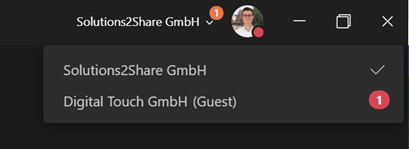
This article shows how to leave a guest tenant in Microsoft Teams step by step. We also take a look at why companies should not rely on users to do this manually. Instead, organizations can use External User Manager to automatically manage and remove guest accounts that are no longer needed.

What is a Microsoft Teams guest tenant?
When you are added to a MS Teams environment outside your organization, Microsoft creates a guest account in Azure Active Directory (Entra ID).
This allows cross-company collaboration: external users can join channels, share files, and participate in meetings.
However, once the collaboration ends, these guest accounts usually remain, unless the user removes themselves manually or the inviting organization deletes them. Over time, this leads to:
- Dozens or hundreds of unnecessary guest connections
- Unclear data ownership and compliance gaps
- Increased security risks due to leftover guest access permissions
How to leave Microsoft Teams guest tenant
Time needed: 5 minutes
If you are part of multiple organizations in Microsoft Teams, you can easily leave those tenants when you no longer need access. To remove guest option, perform the following steps:
- Open your MS account and go to ’Manage Organisations’
Open your account (or “Workaccount“) at https://myaccount.microsoft.com and click ’Manage Organisations’ under ‘Organisations’.
- Find organization and leave organization
Under ‘Other organisations you belong to’, find the tenant that you want to remove yourself from, and click ‘Leave organisation’.
- Confirm your decision
You will be asked for your confirmation once again. Click on ‘Leave‘ to remove organization.
- Email and Teams notification
You should receive an email confirmation as well as a notification in your Teams client.
- Restart Teams
Restart your Microsoft Teams and the guest option has disappeared.
Why organizations should not rely on users to remove themselves
While users can remove their guest access, few ever do.
That’s why relying on manual cleanup leads to unmanaged access and security gaps.
Common problems organizations face:
- External guests retain access to files and chats long after projects end.
- IT has no clear overview of all active guest users.
- Manual removal is time-consuming and prone to errors.
- Inactive guest accounts remain visible in Microsoft Entra ID, increasing risk exposure.
Especially in industries with strict compliance or data protection requirements, unchecked guest access can quickly become a serious issue.
How External User Manager automates guest management and removal
Manual cleanup isn’t sustainable, especially in large organizations with many external collaborators.
External User Manager provides an automated, policy-based way to manage all Microsoft 365 guest users.
With External User Manager, IT administrators can:
- Automatically detect all guest users across Microsoft 365 tenants
- Set expiration policies for external access (e.g., after 90 days of inactivity)
- Trigger access reviews before removing guests
- Revoke access instantly when no approval or activity is recorded
- Generate audit reports for compliance and documentation
This ensures a secure, compliant and transparent guest user lifecycle, without relying on end users to take action.
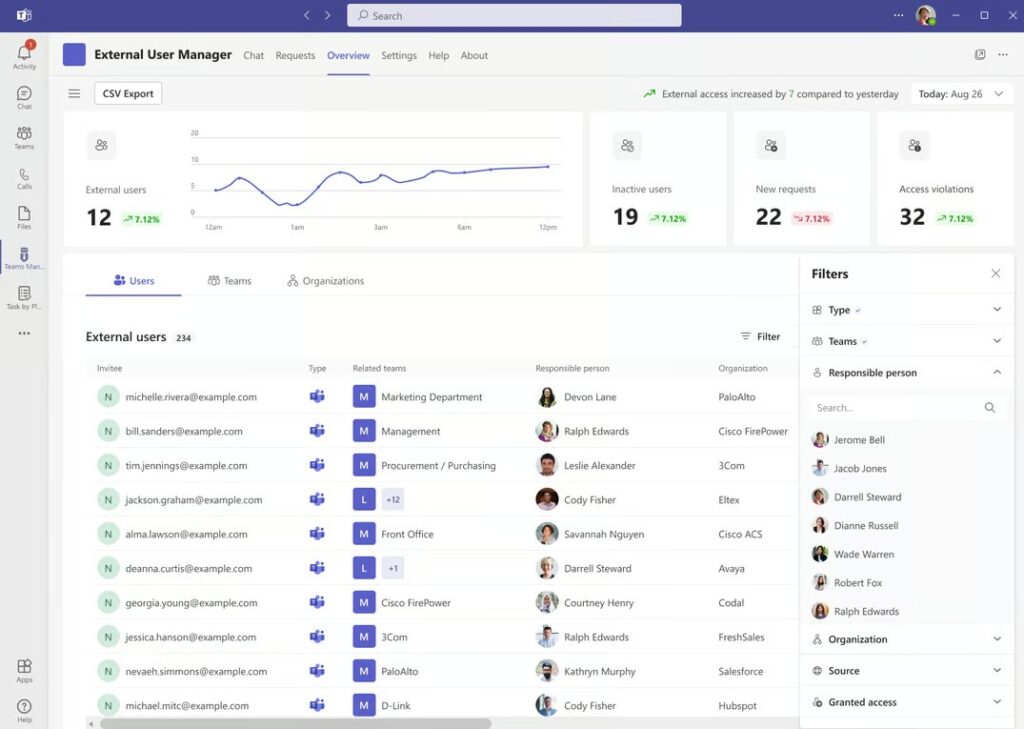
Real-world example: Automated guest cleanup with External User Manager
A European construction company discovered over 200 inactive guest accounts across its Microsoft 365 environment.
Manually removing them would have taken days, and some accounts had been inactive for over a year.
After implementing External User Manager, the IT team was able to:
- Automatically detect and remove inactive guest users
- Set custom retention policies (“guest lifecycles”) per department
- Send renewal notifications (access reviews) before deletion
- Keep a transparent audit trail of all guest activities
Result:
90 % less manual admin effort and full compliance with internal data governance policies.
FAQ: Leaving guest tenants and managing external users
They can, but it’s not required. The inviting organization can remove external users at any time, ideally using a governance tool like External User Manager.
Yes. External User Manager allows complete automation of guest lifecycle management across Microsoft 365.
Partially. Microsoft offers basic guest access controls, but not lifecycle automation, expiration policies, automated access reviews or approval workflows.
The guest account is deleted from Azure AD, and access to all Teams, SharePoint sites, and resources is revoked automatically.
Conclusion: Simplify guest tenant management with automation
It’s good practice for users to leave guest tenants they no longer need. However, in reality, few ever do.
That’s why companies should take control and automate this process instead of relying on users.
With External User Manager, your organization can manage, monitor, and remove guest access securely automatically, ensuring that no external user stays longer than necessary.
Request your free demo of External User Manager today! Discover how easy it is to automate guest management and compliance in Microsoft Teams.


Chief Commercial Officer and Governance Specialist at Solutions2Share
Florian Pflanz has more than 8 years of experience with Microsoft 365 and has supported over 250 workshops on Teams governance.
His focus lies on lifecycle management, provisioning, and compliance requirements in regulated industries.
He shares best practices with IT admins and decision-makers to reduce complexity and strengthen secure collaboration in Teams.


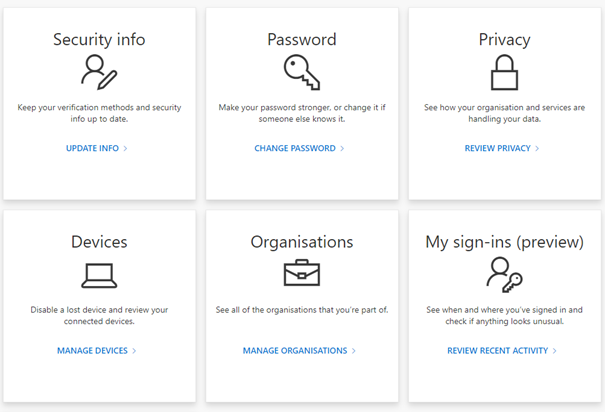
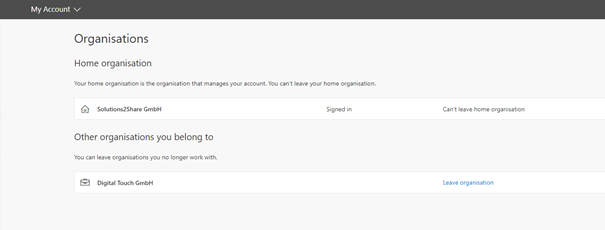




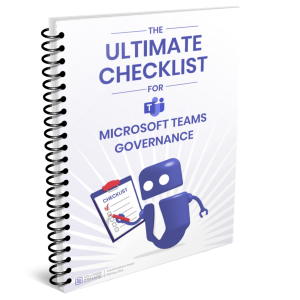
Thank you for posting this, it really helped me clean up one of our User’s Teams client!
Hey,
thank you for your feedback. We are happy to help!
Greetings,
Michelle from the Solutions2Share team